Andrew Farah is the Founder & CEO of Density, a sensor technology company who measures the, at times, unusual behavior of people and how they interact with the space around them.
VIEW PRESENTATION:
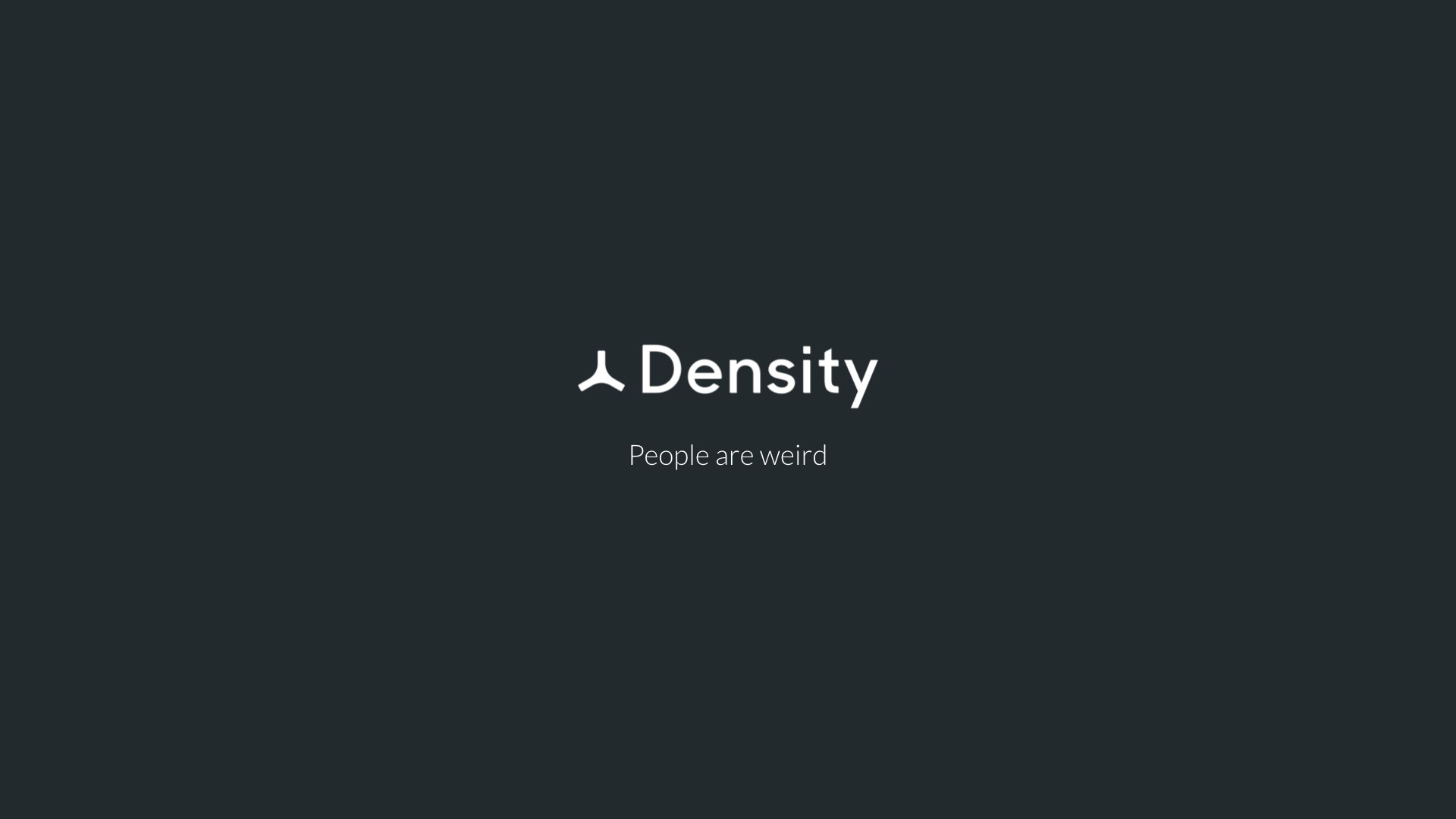
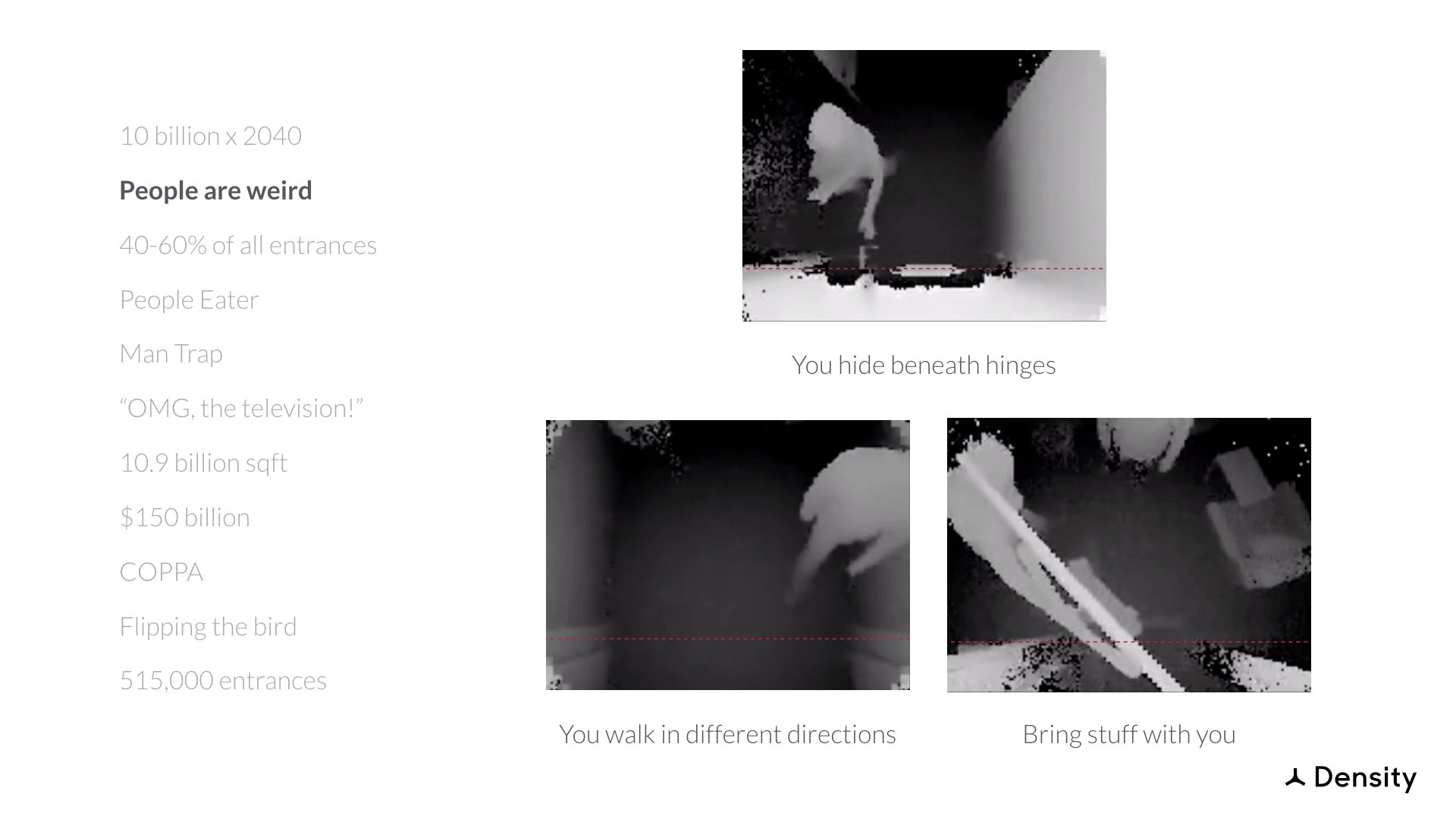
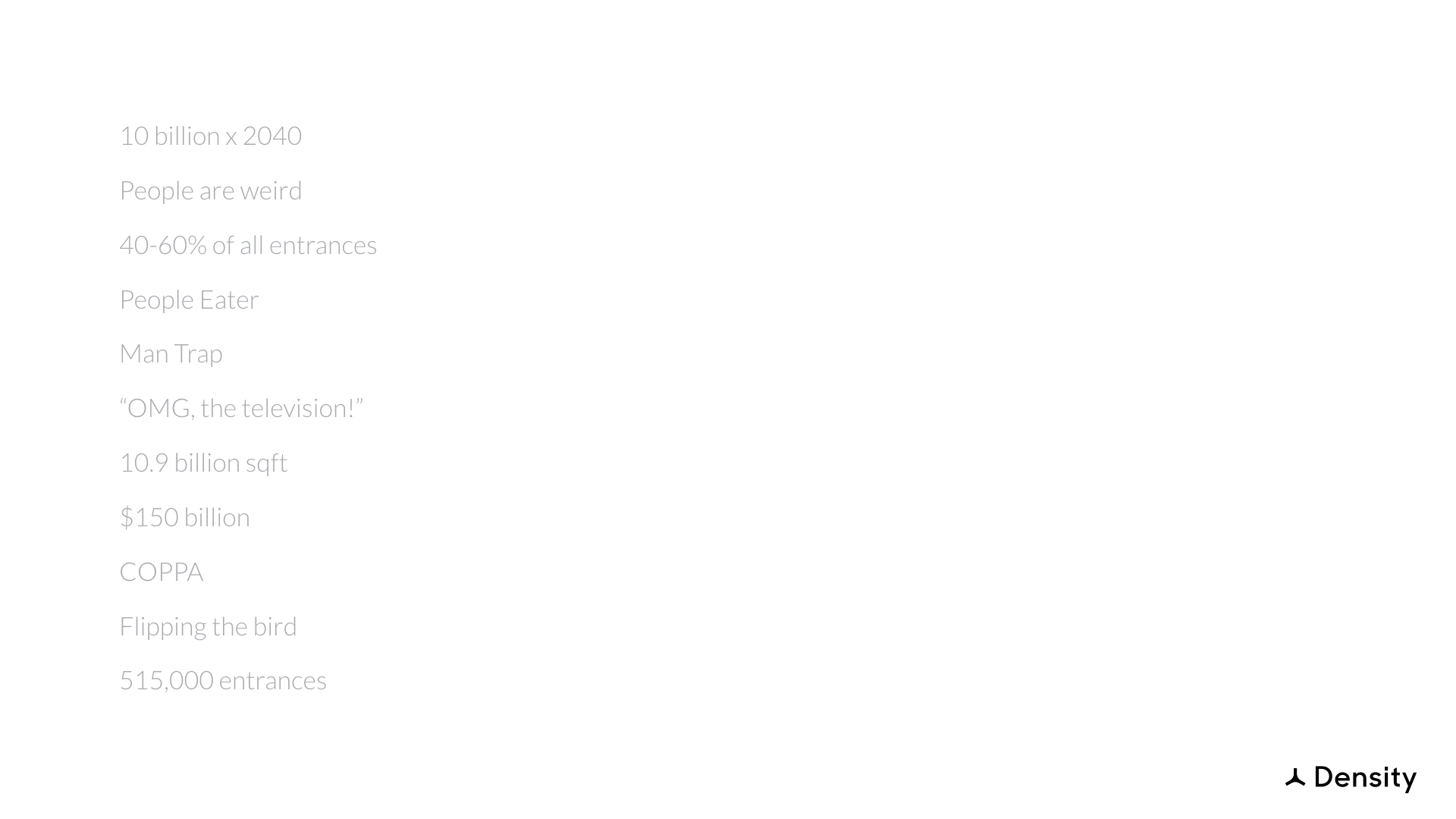
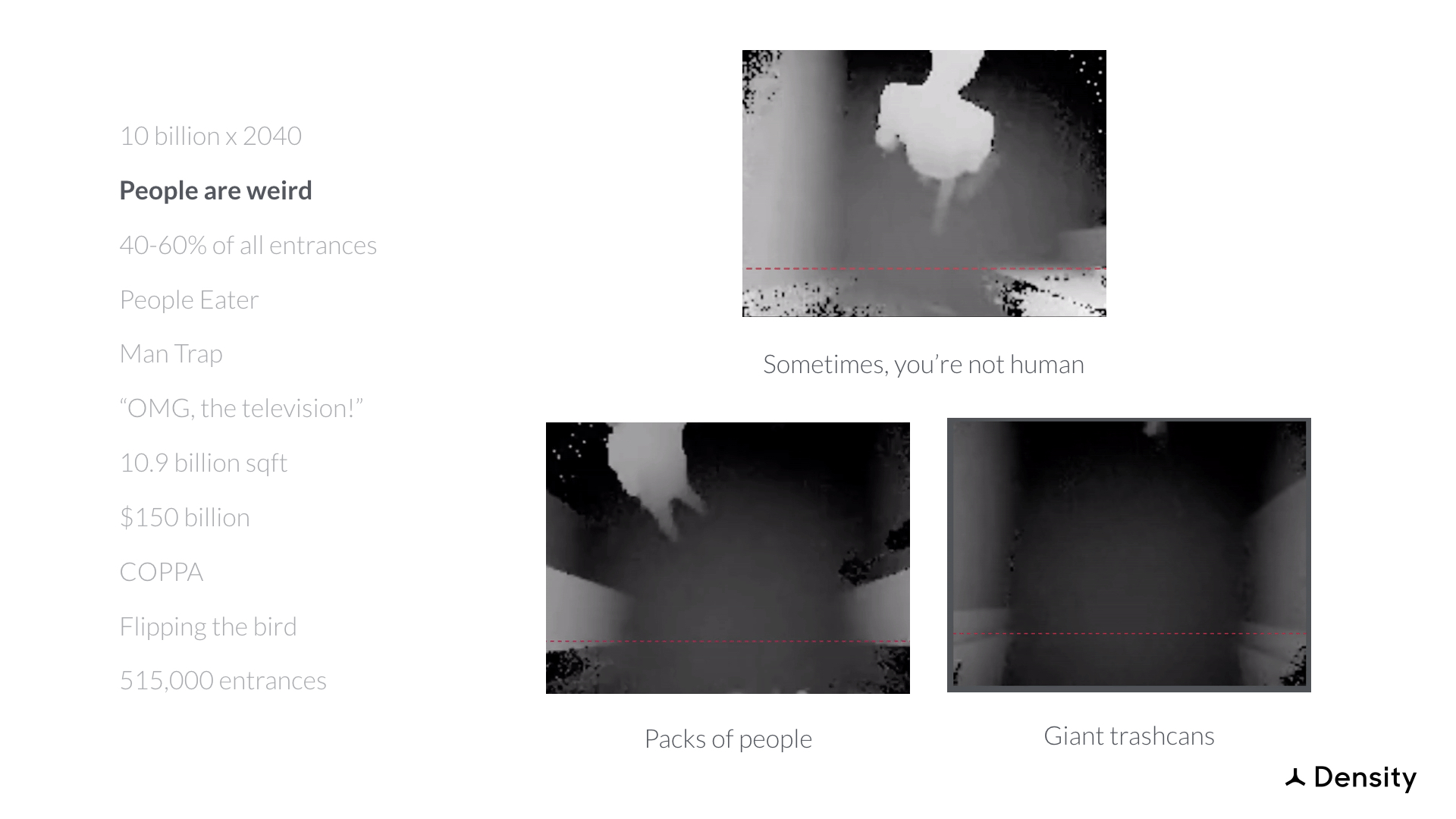
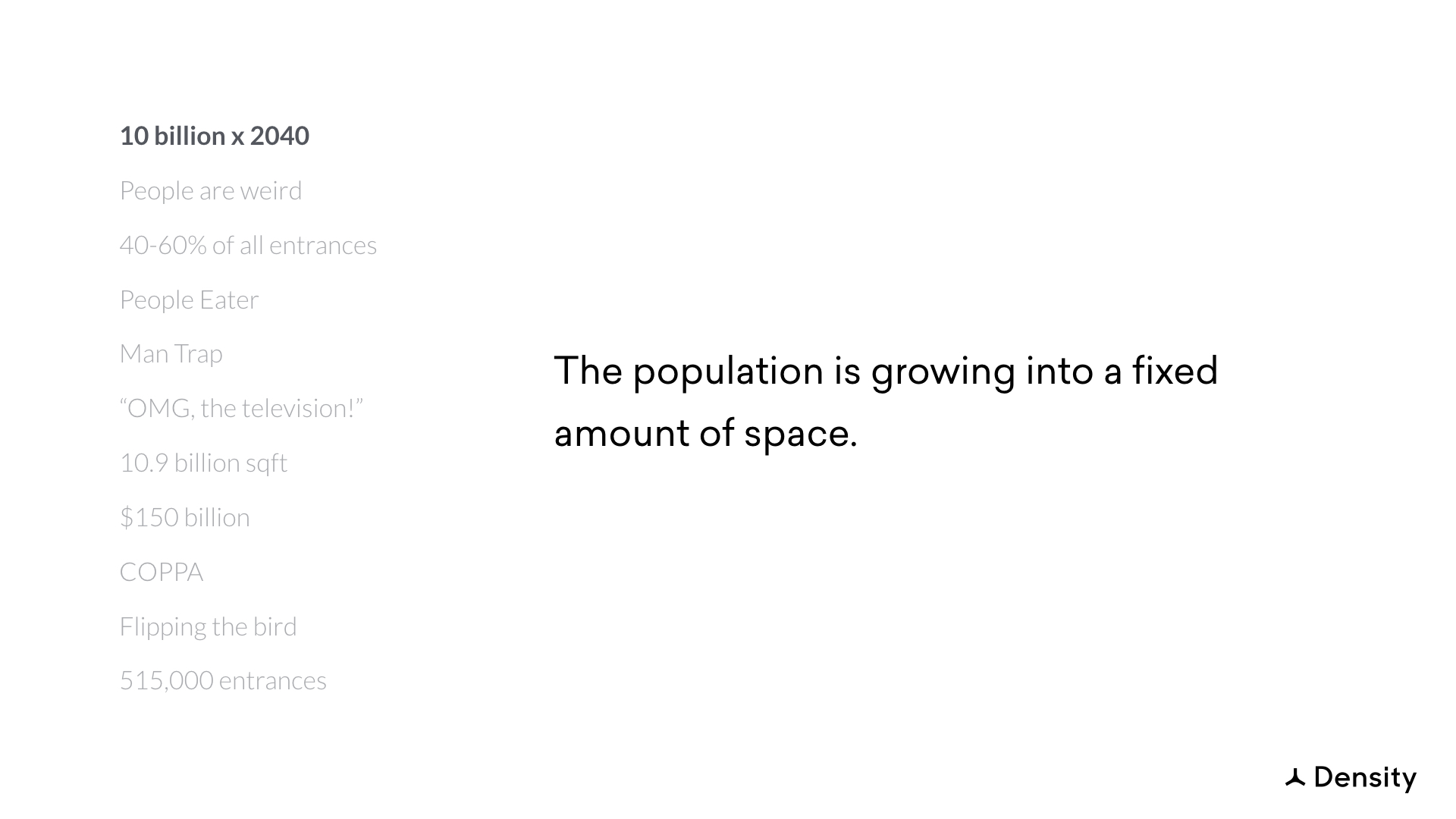
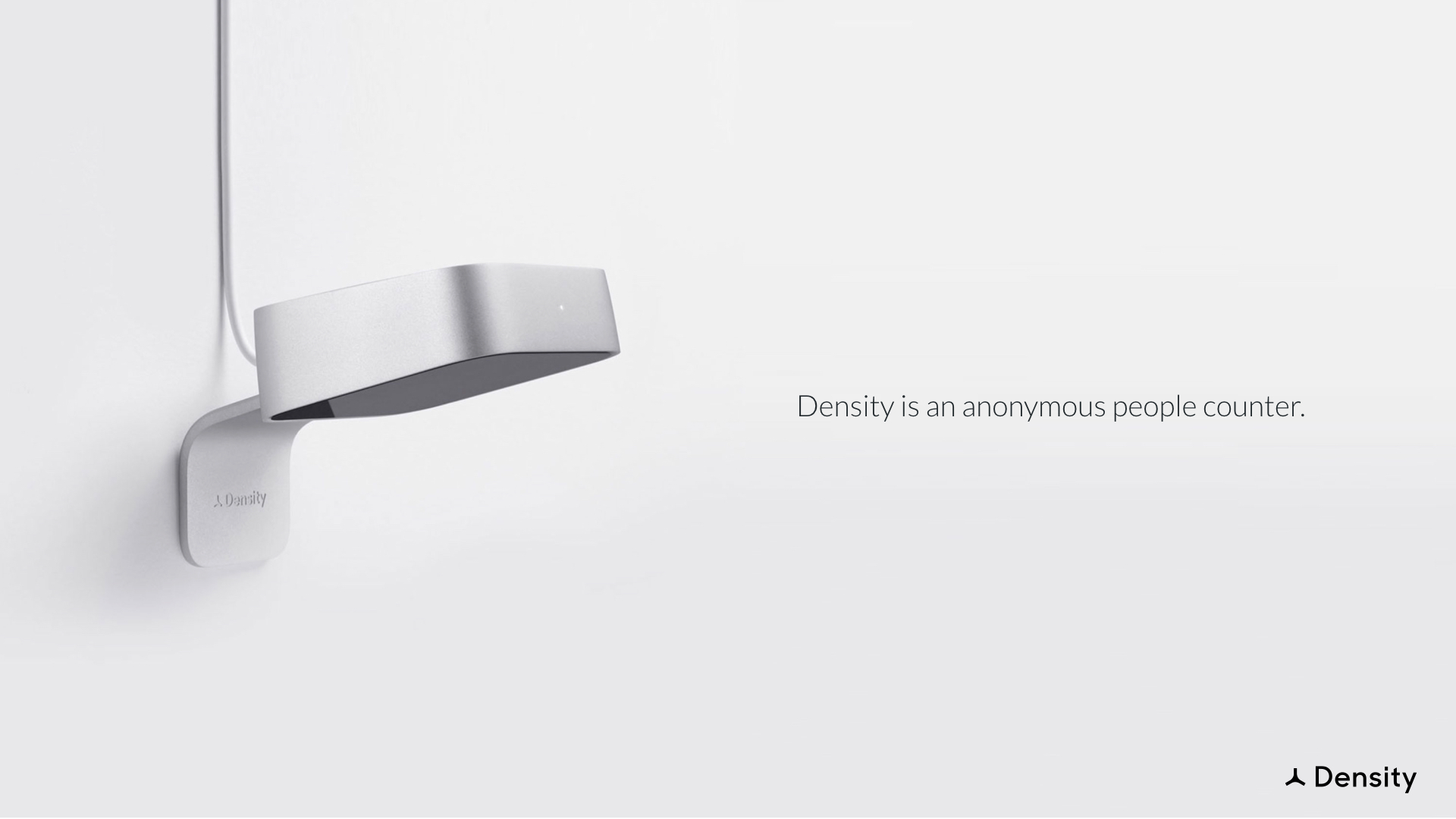

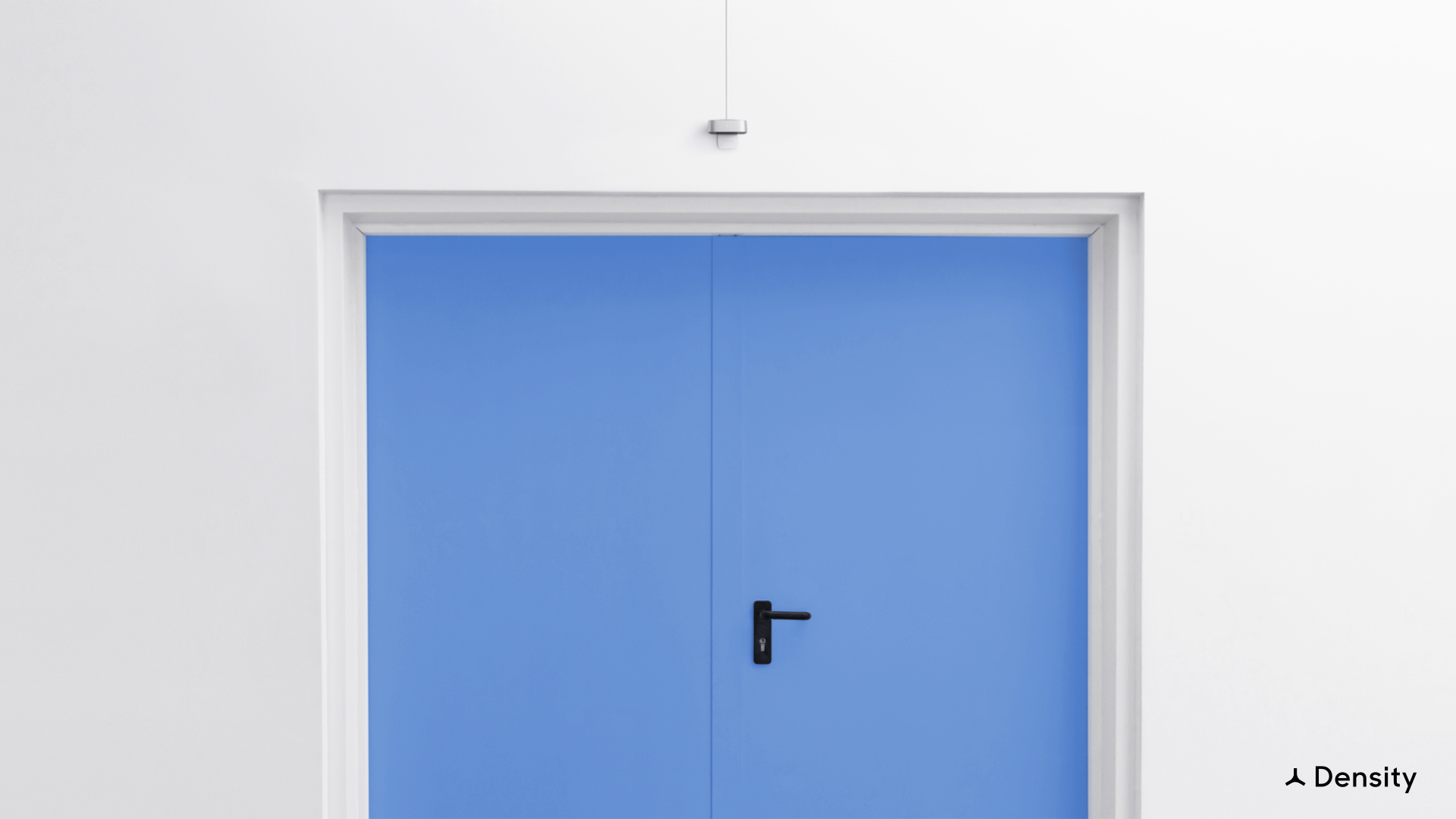
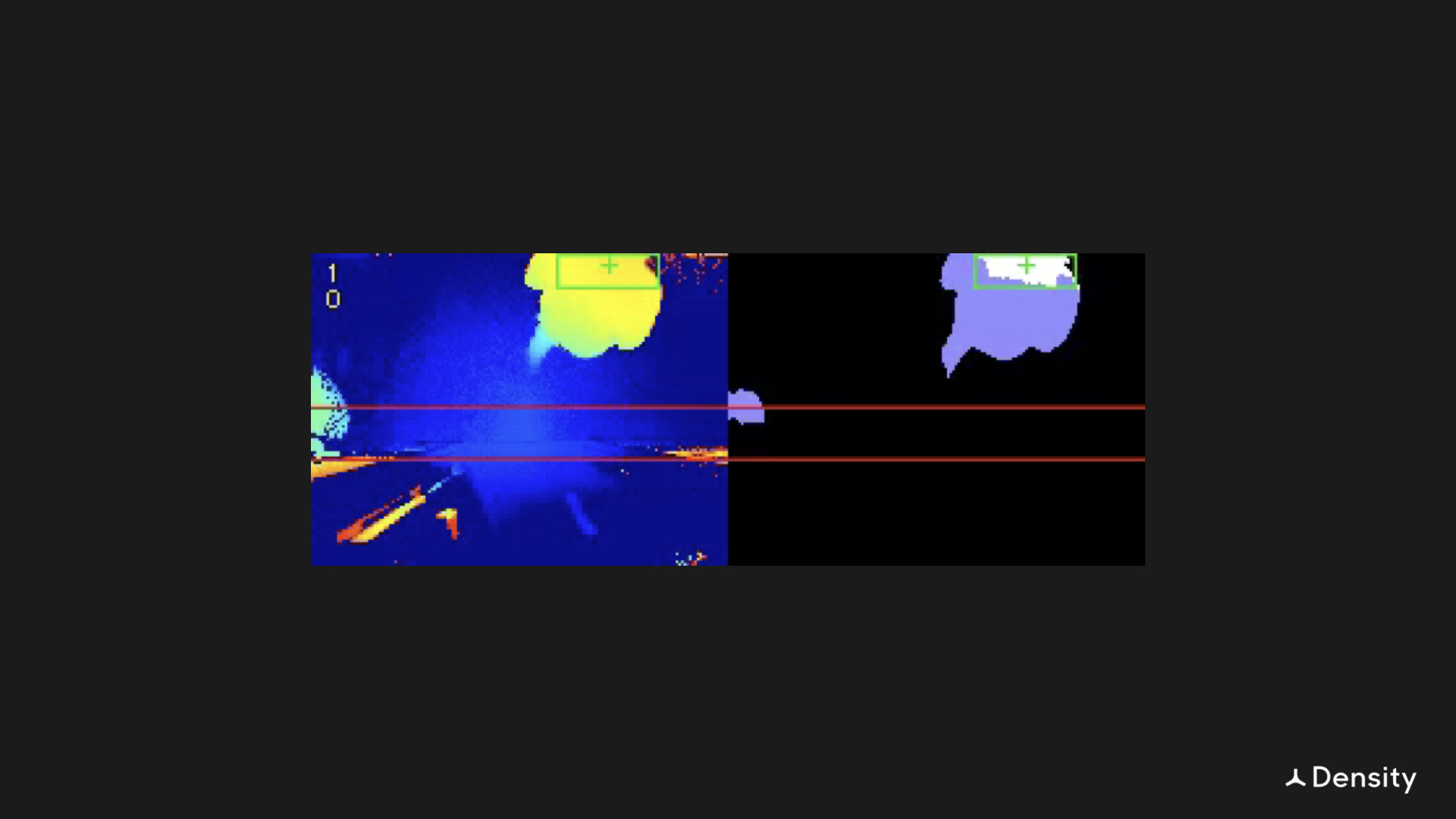
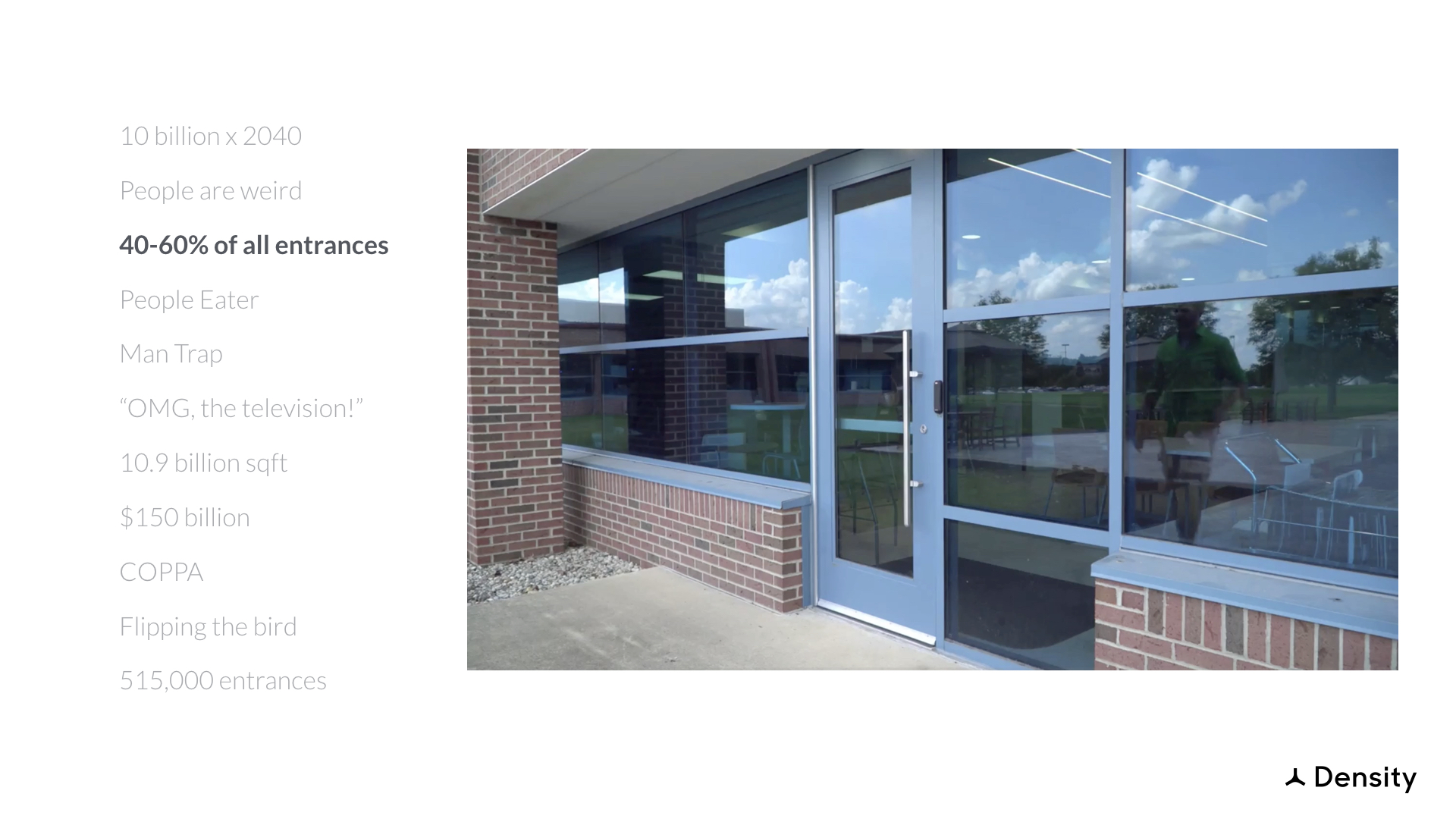
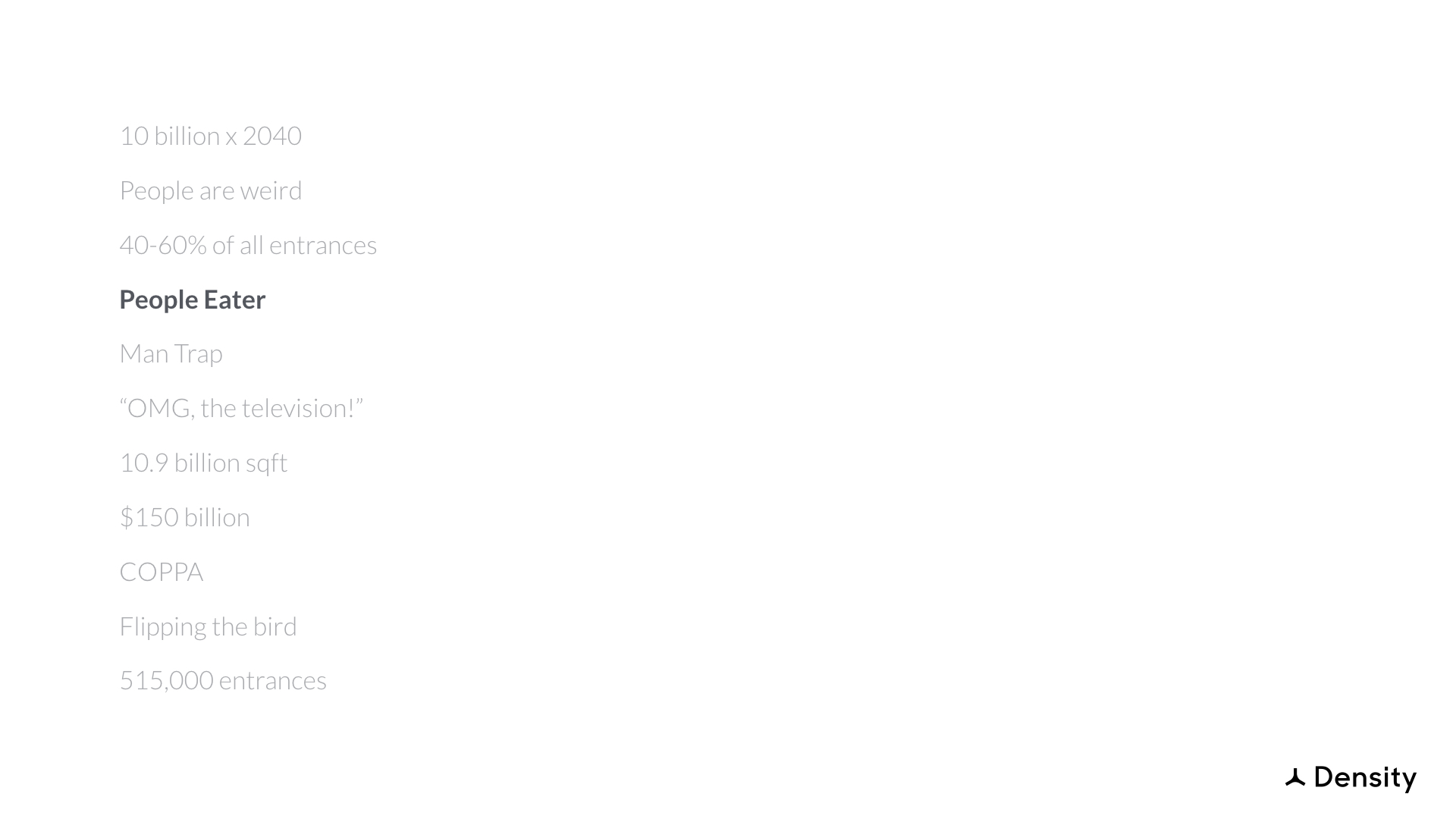
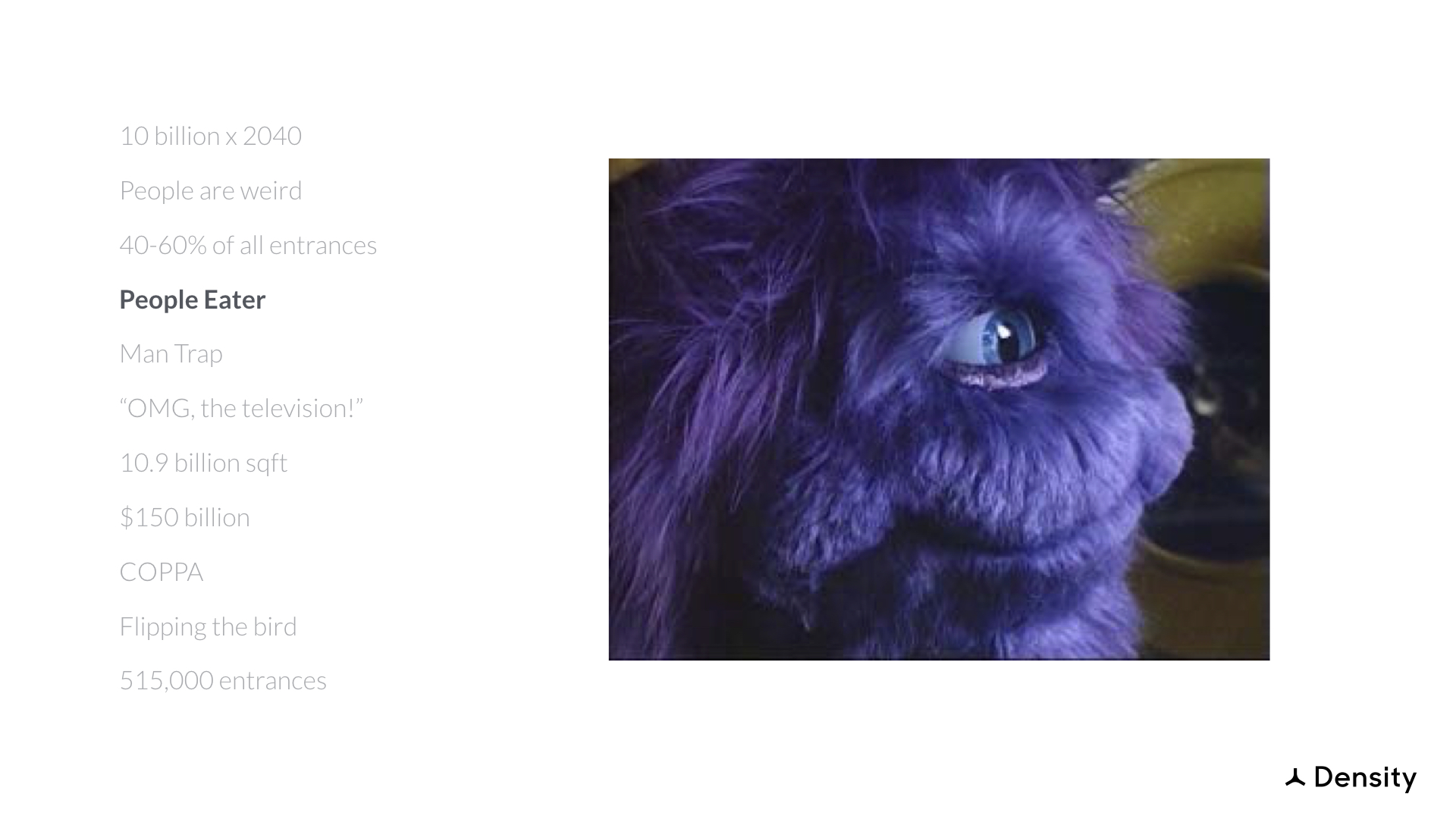
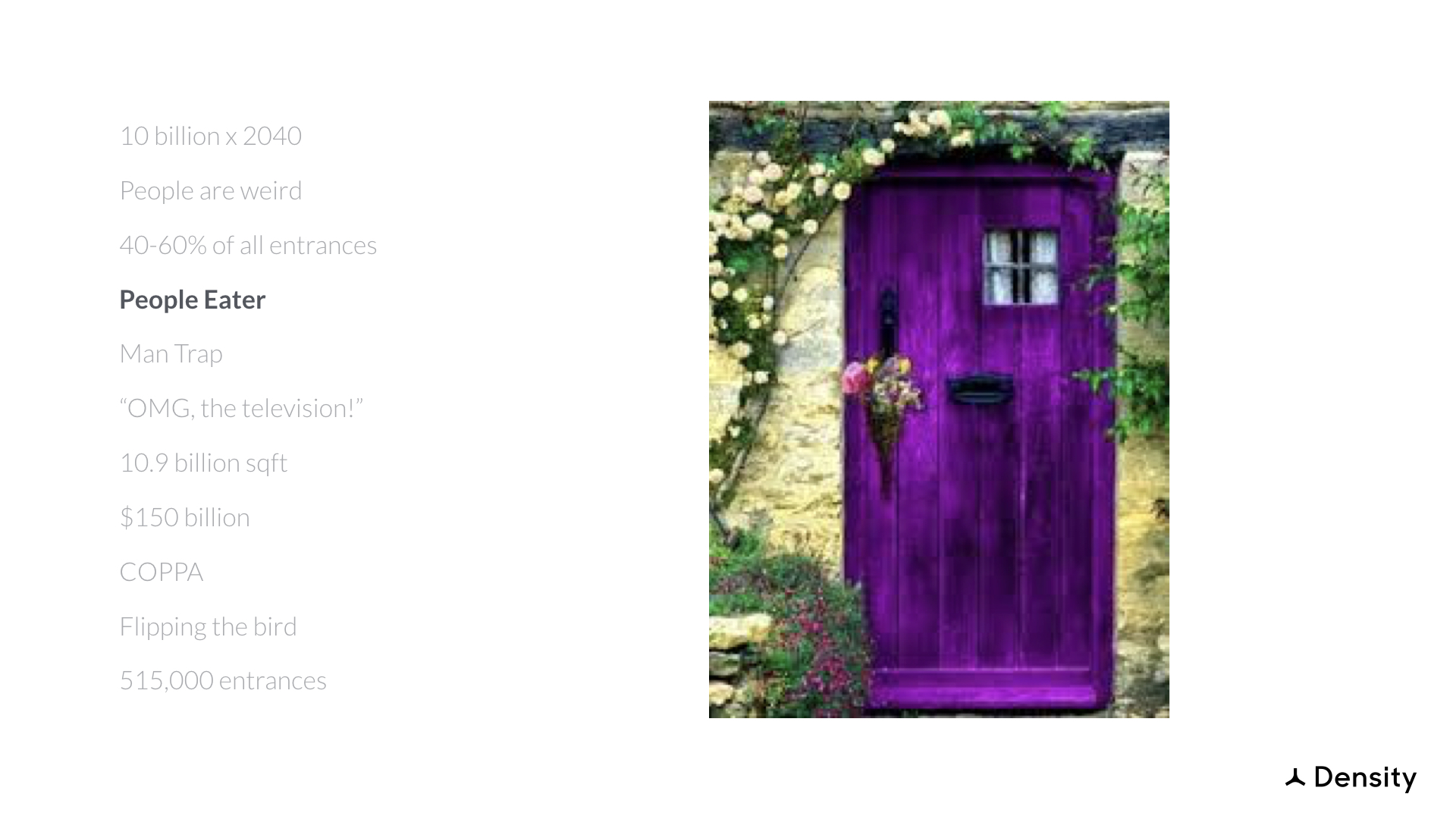
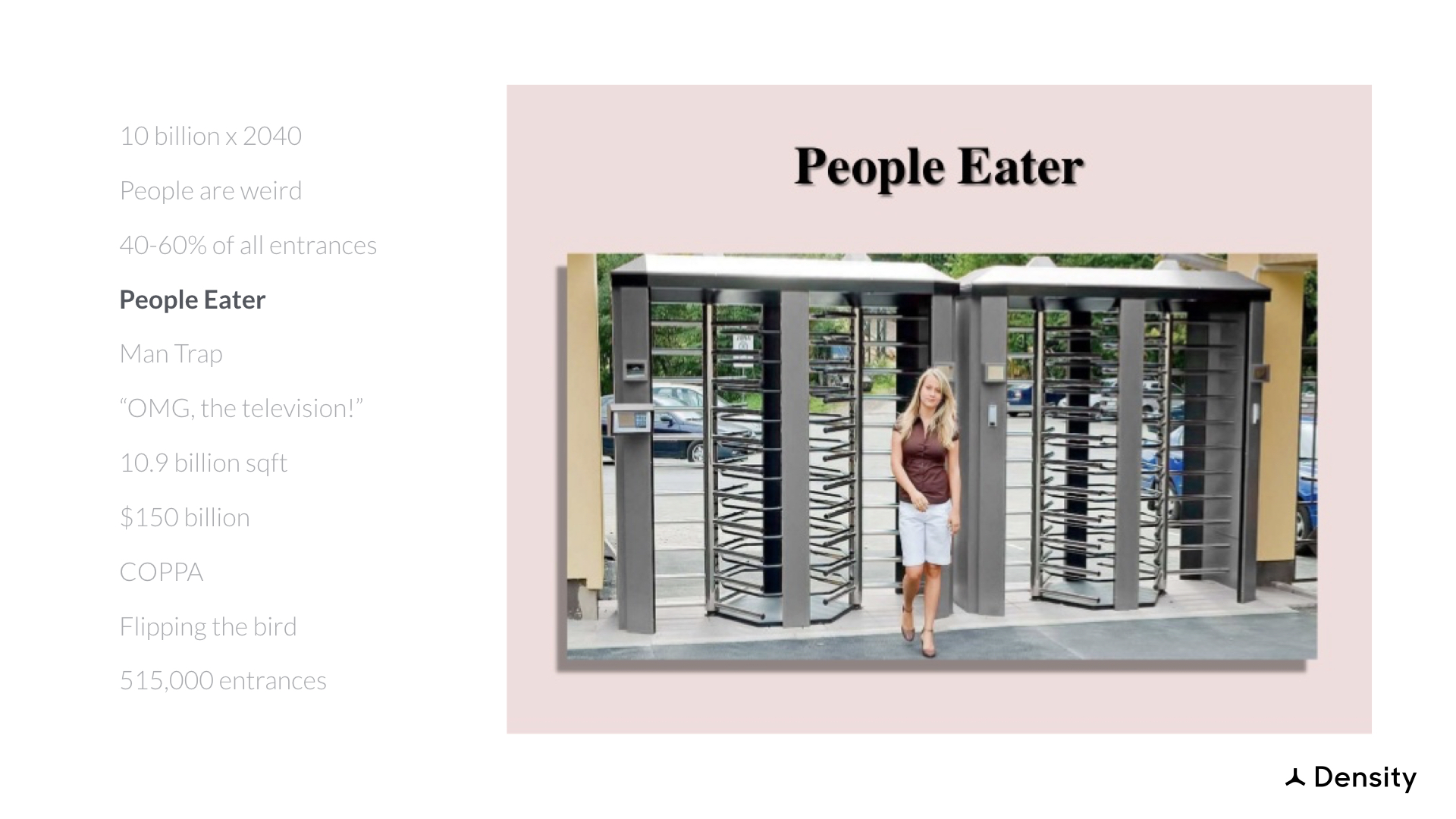
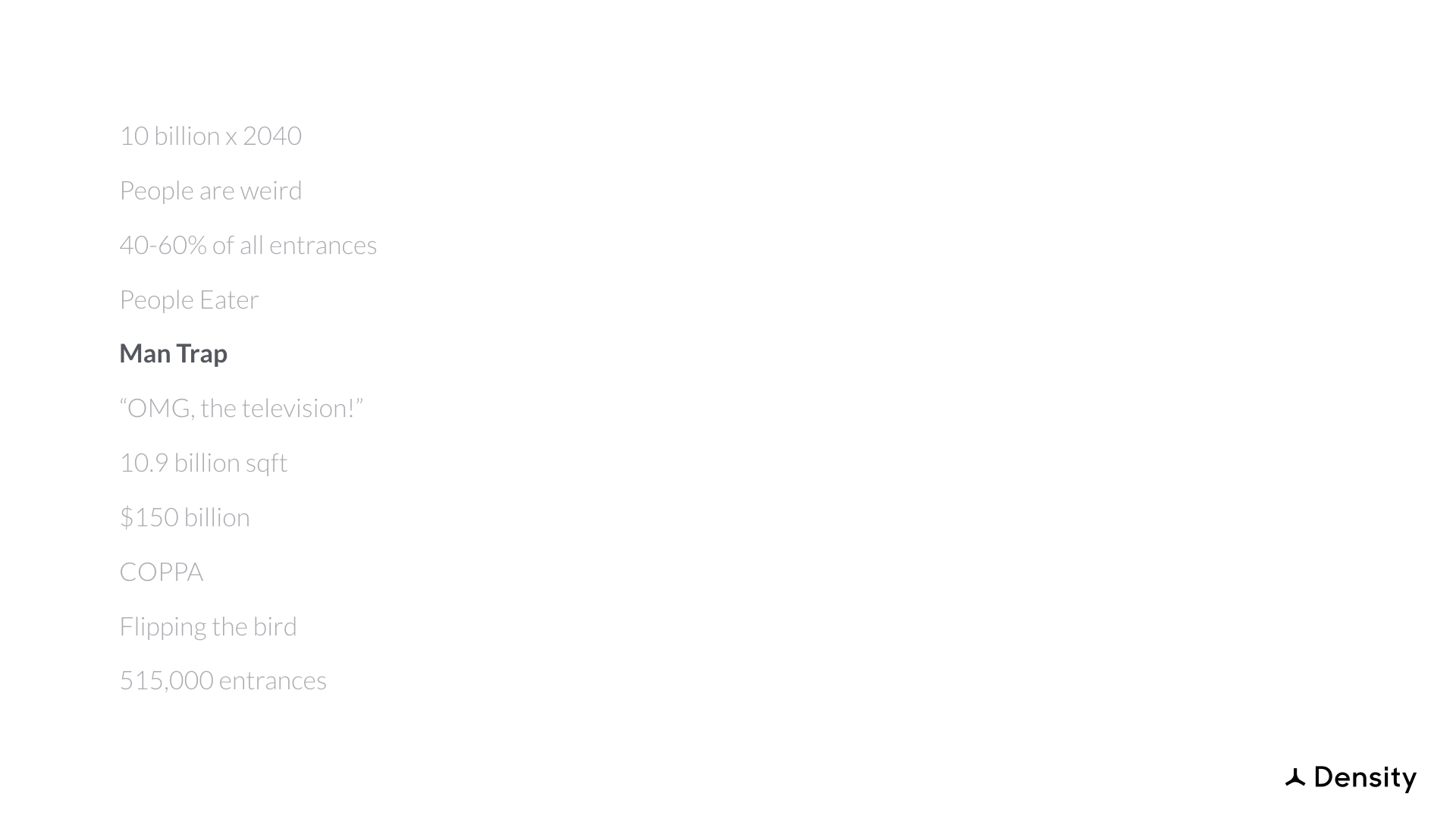
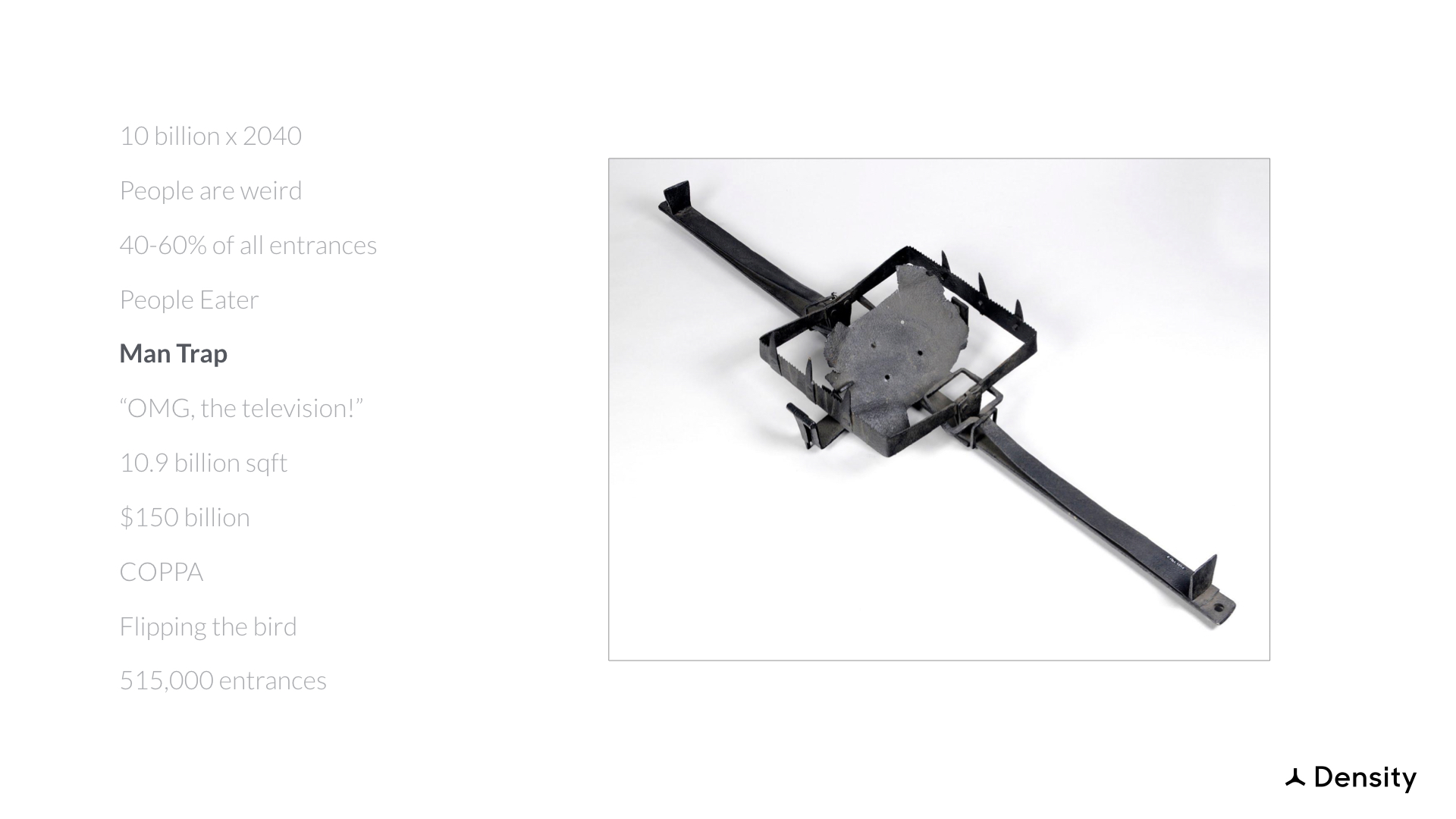
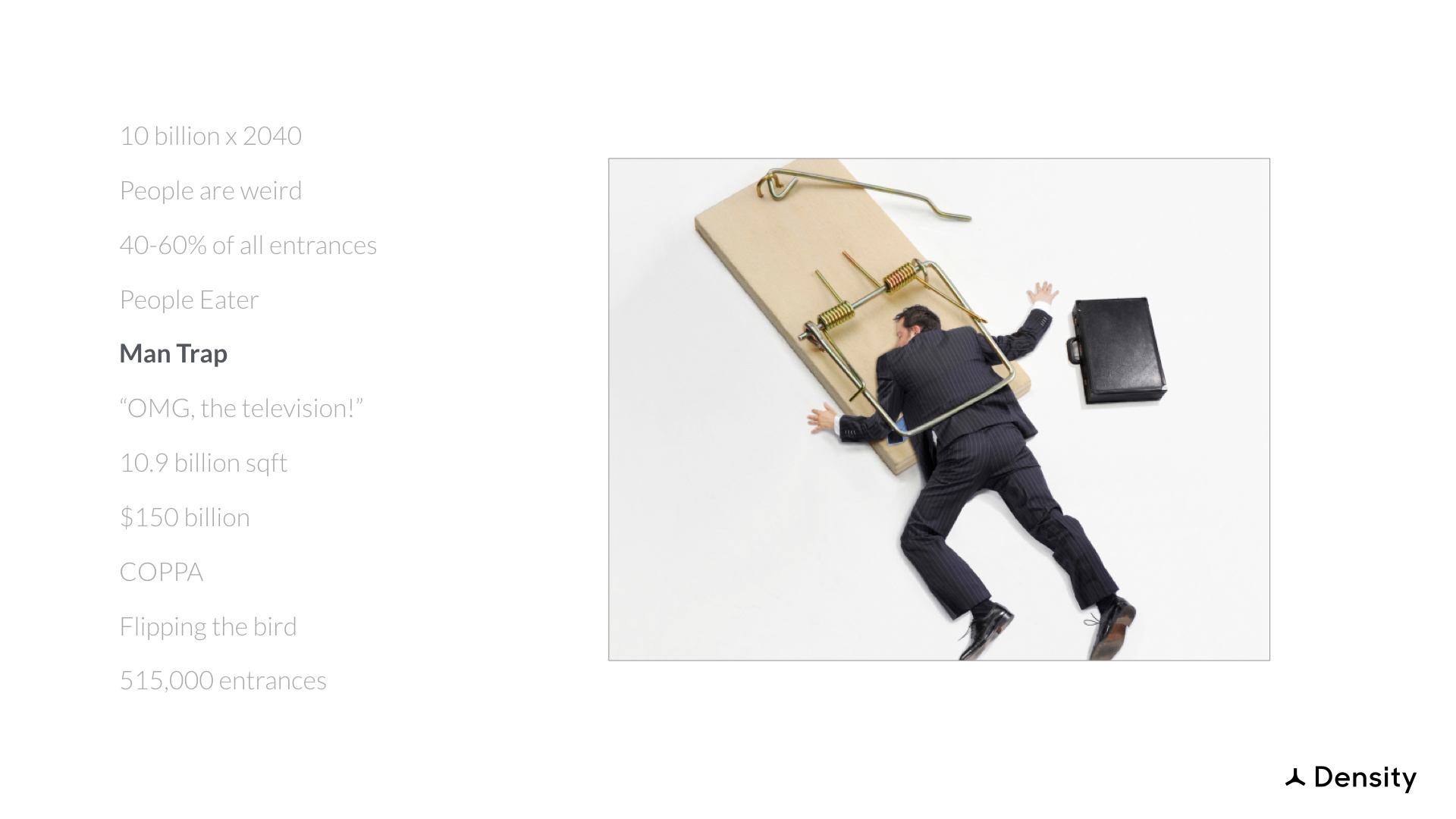
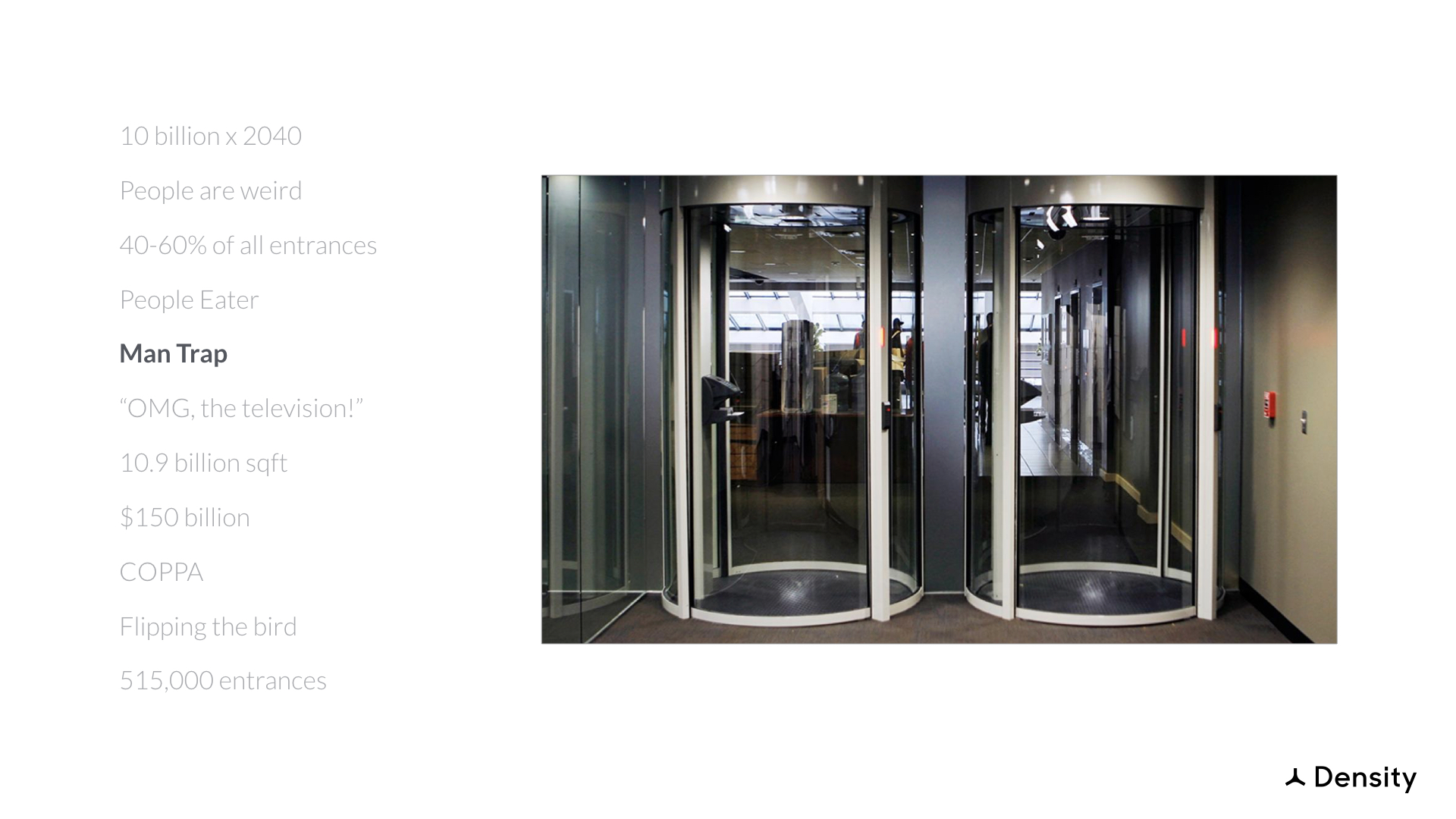

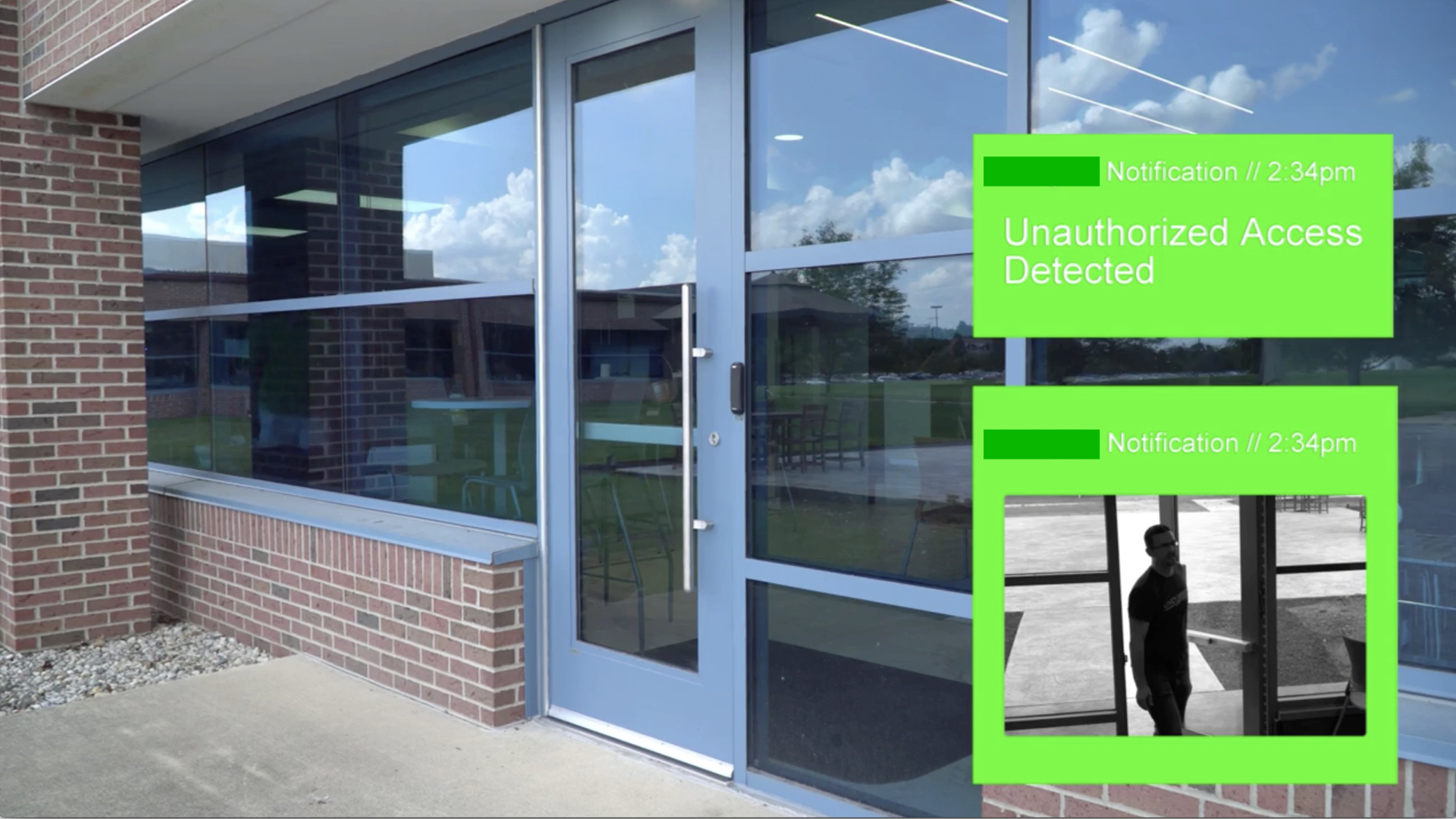
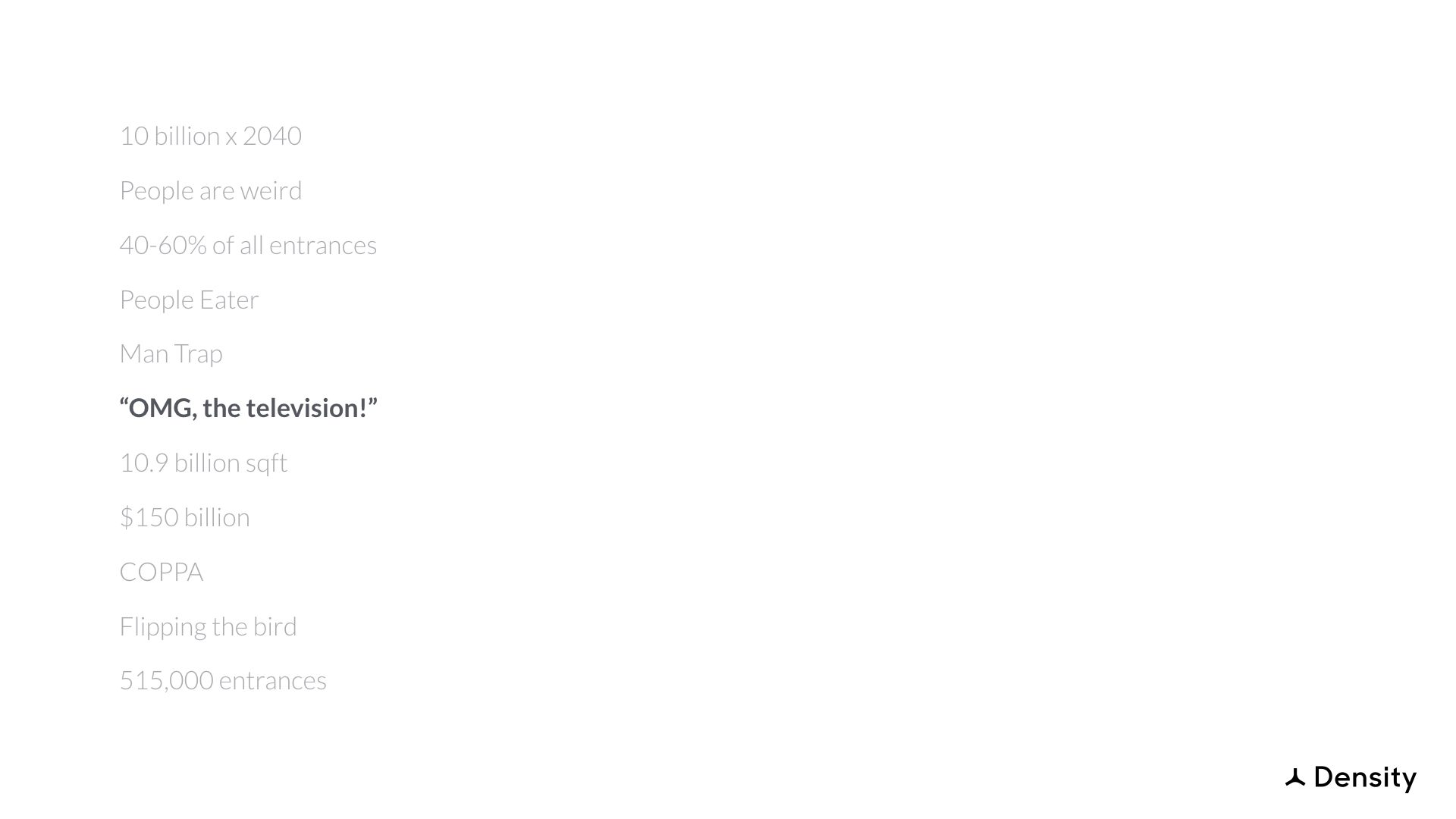
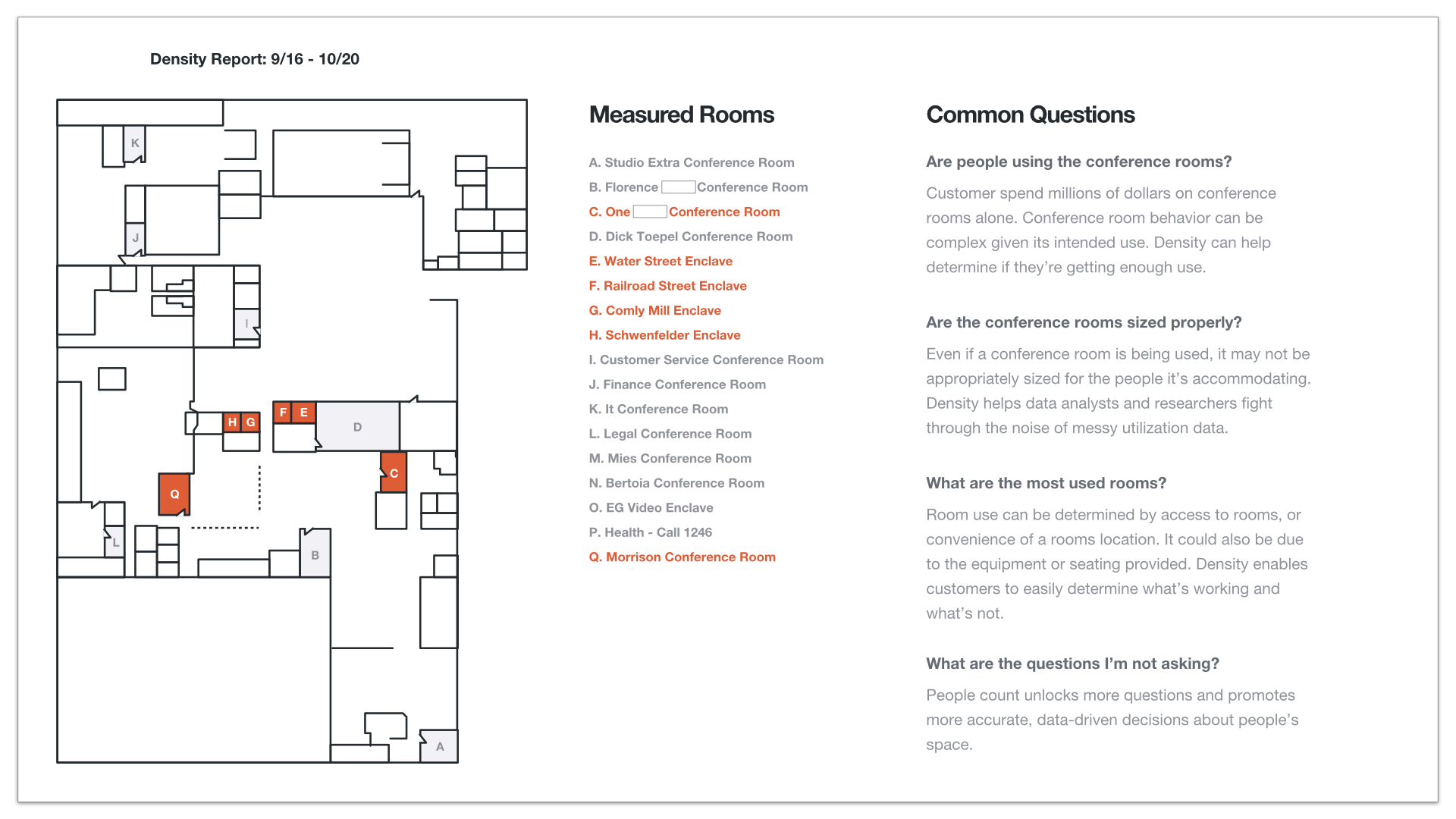
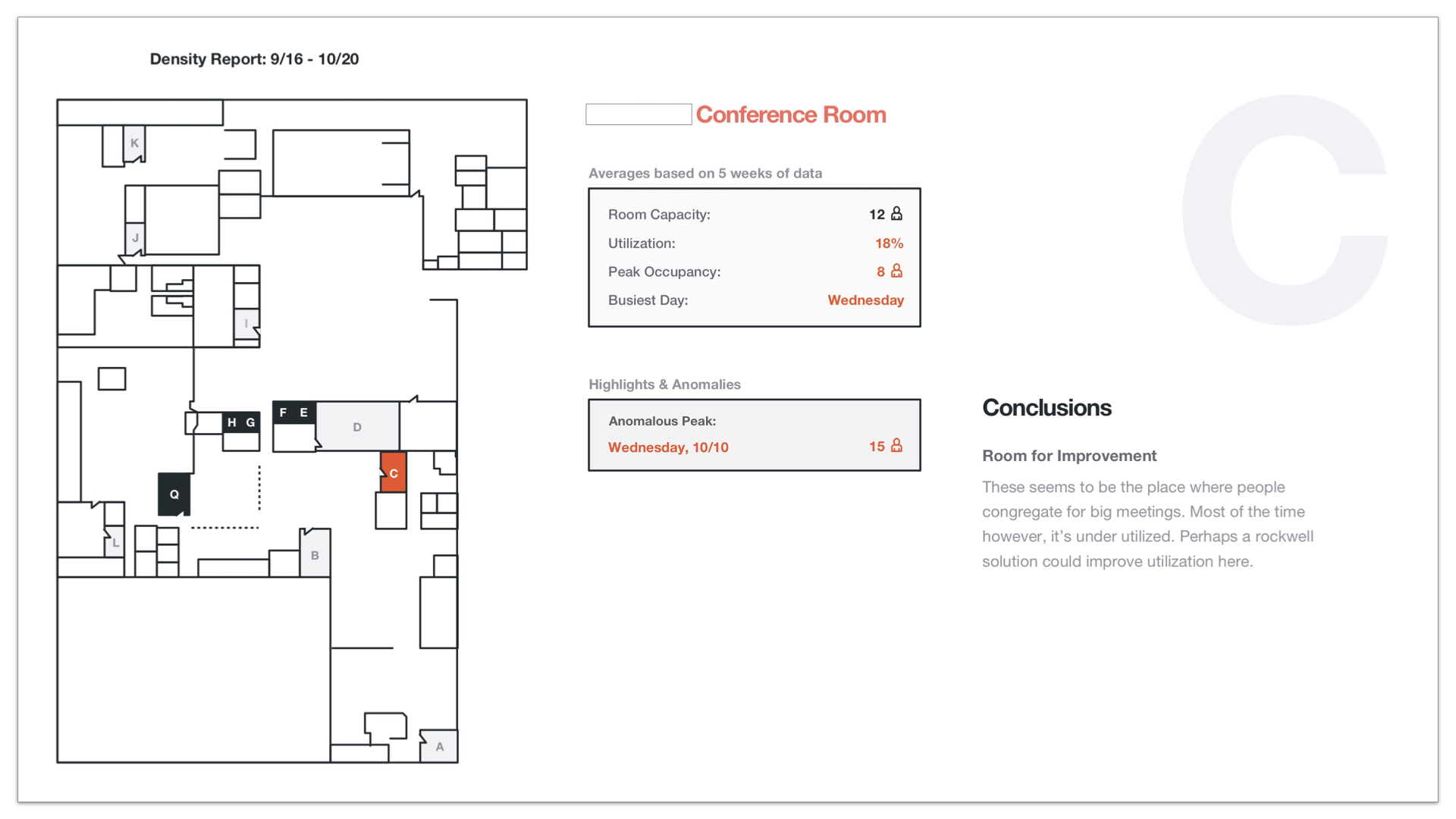
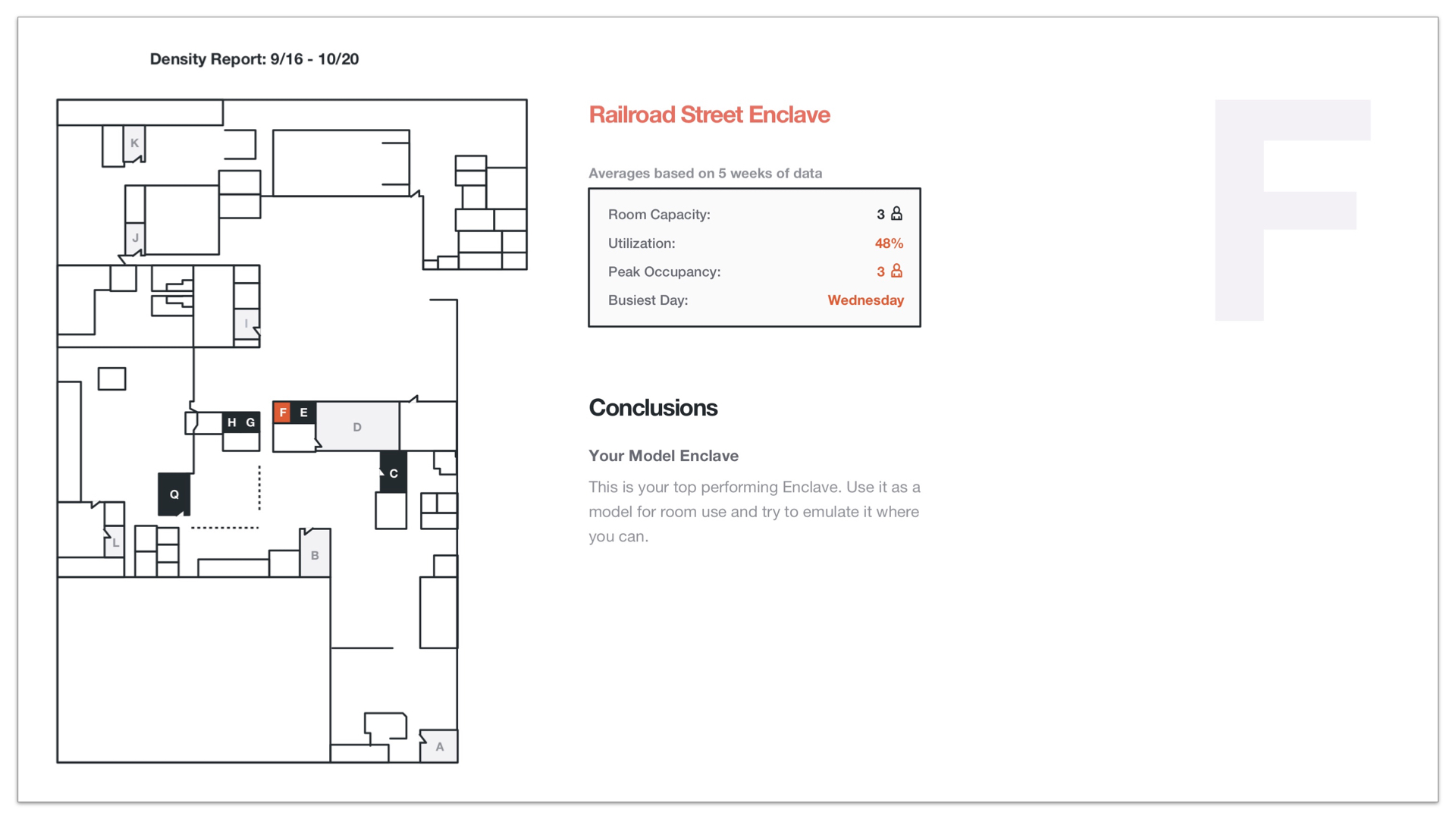
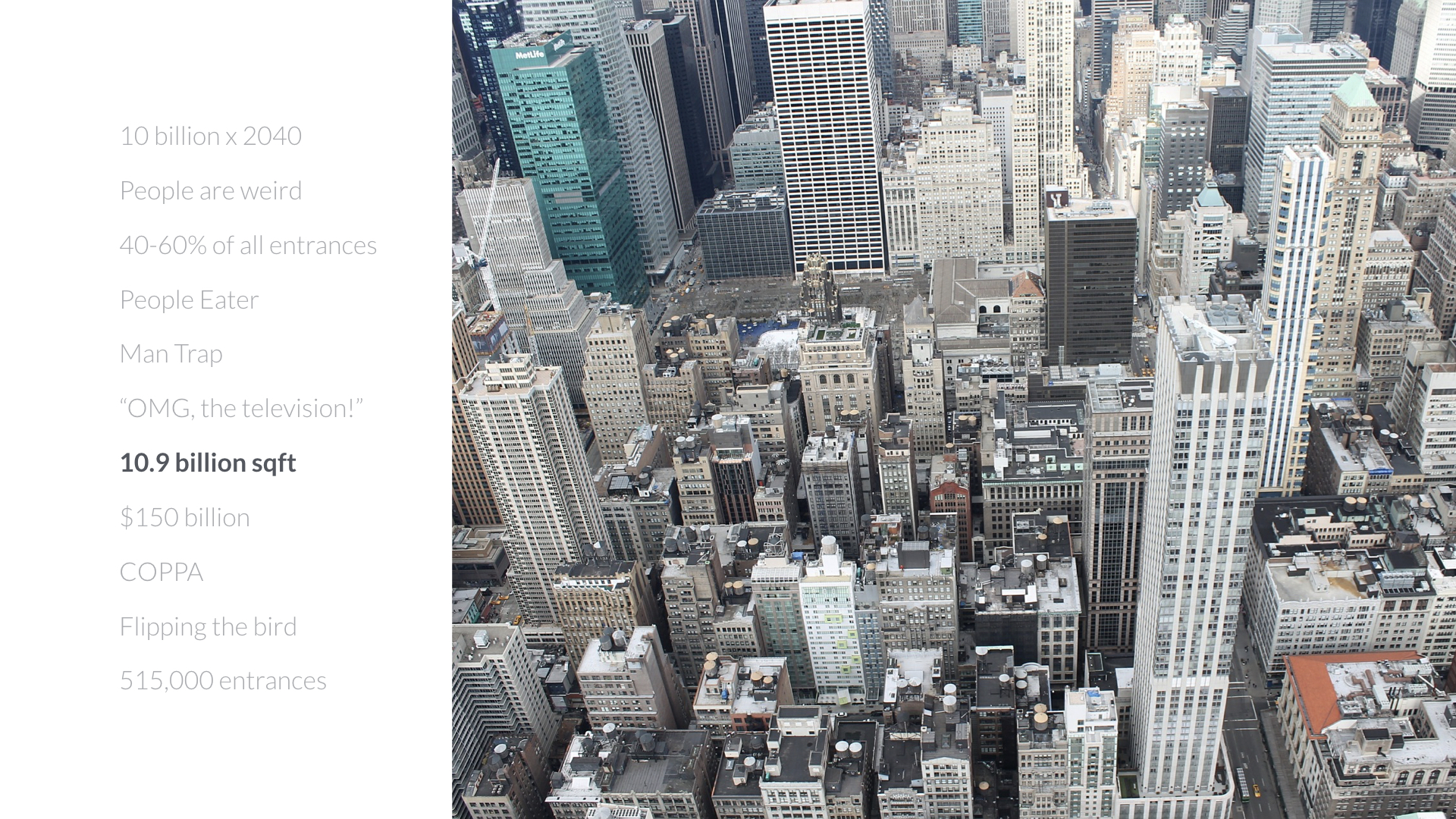
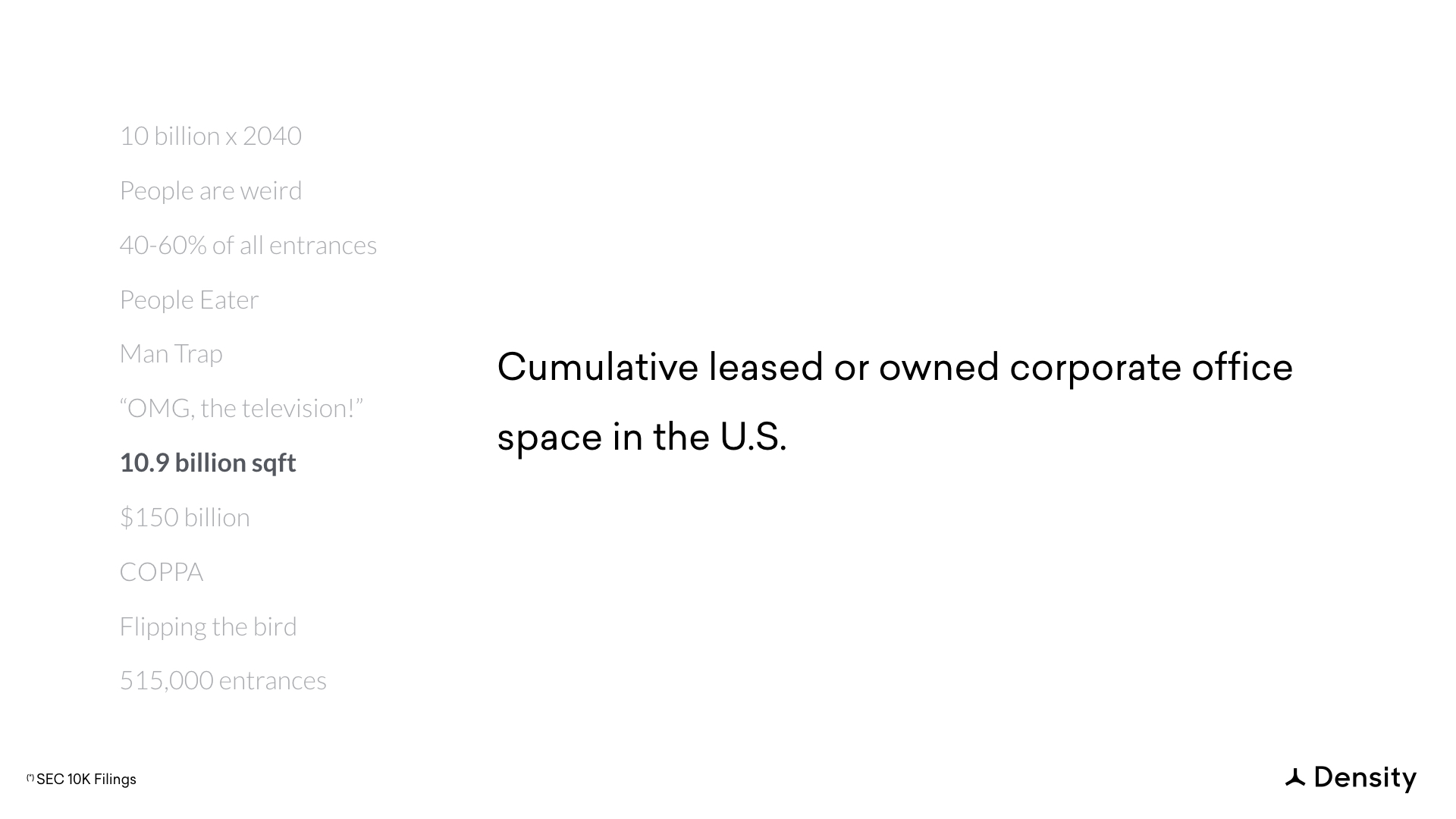



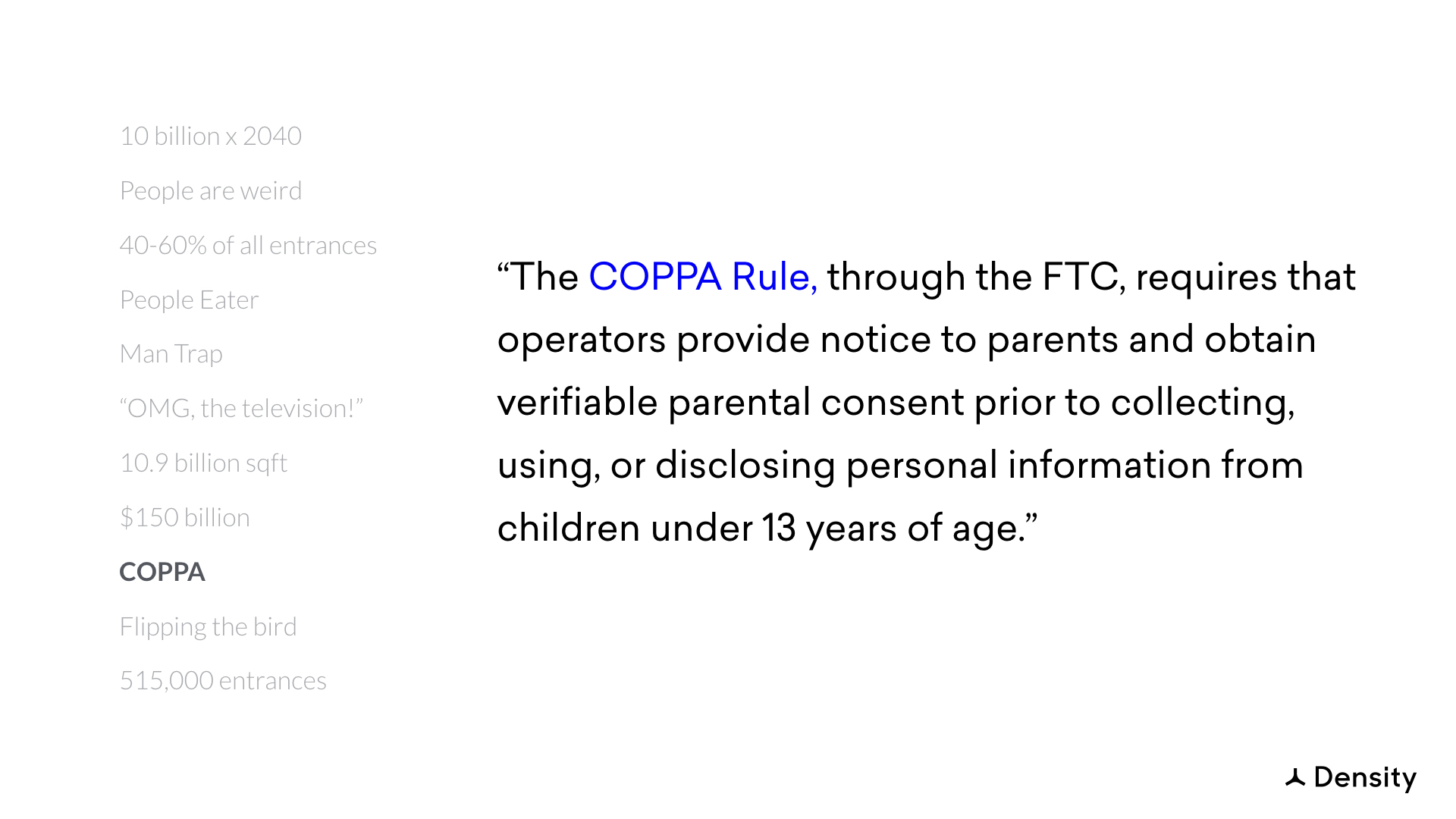

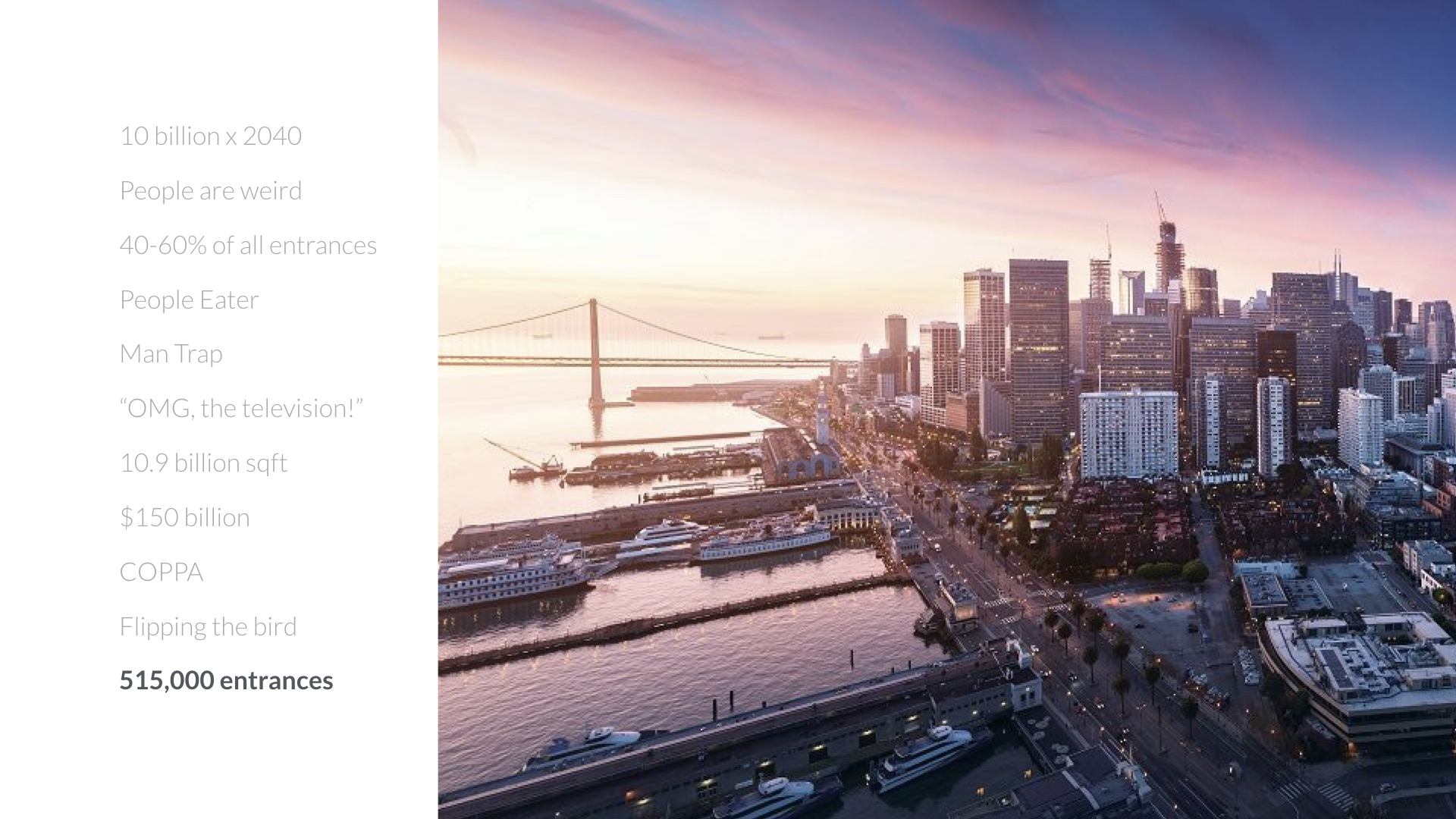
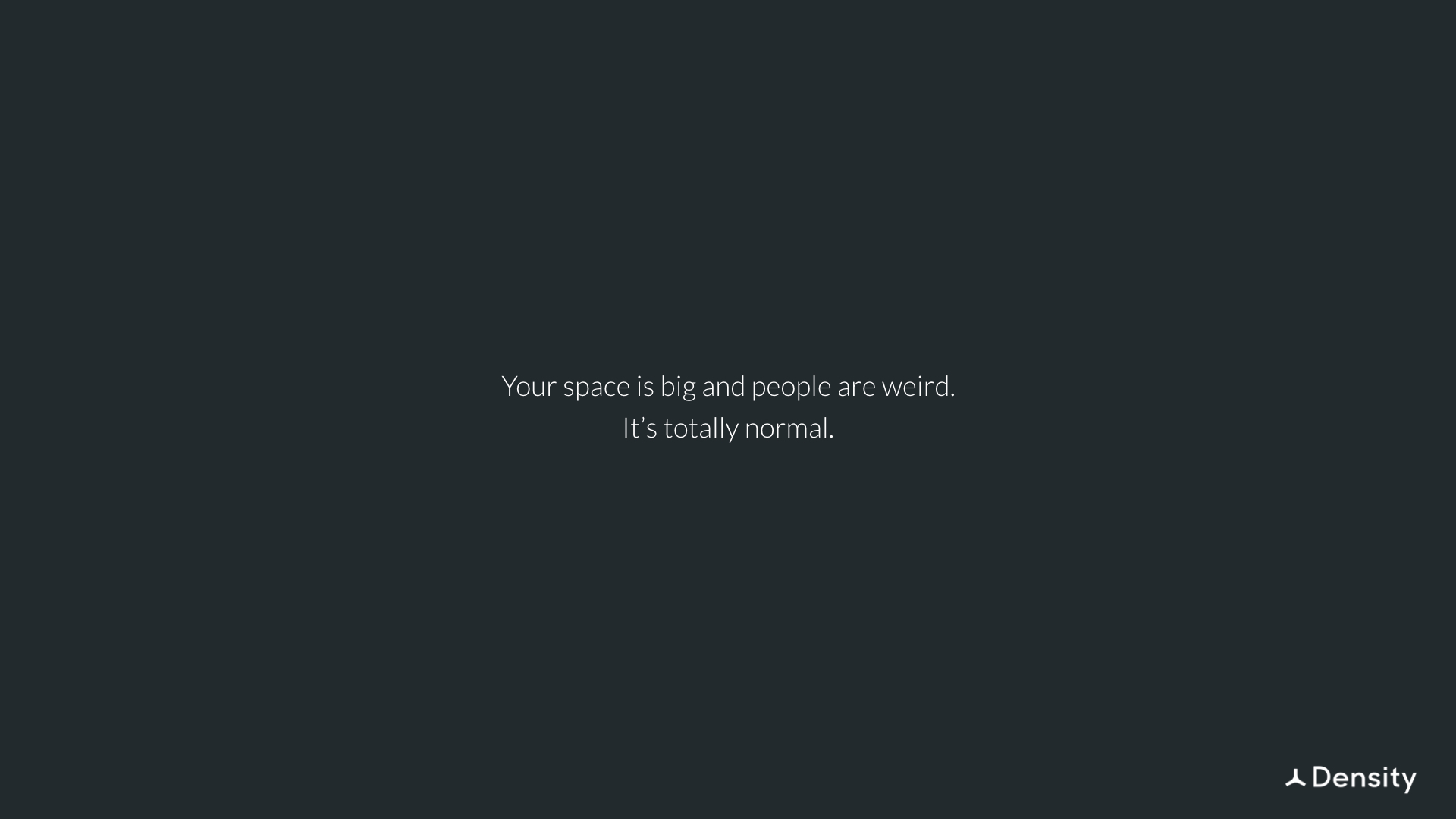


VIDEO TRANSCRIPT:
My name is Andrew Farah Co-Founder and CEO of a company called Density. My talk is called People are weird. So I'm going to explain a little bit more about what we're going to go through today.
So first off, the population has grown into a fixed amount of space, like we're not creating more earth. So the way that we solve that problem is obviously by building in three dimensions. This is kind of a staggering number. Now this is 10 billion humans by 2040. But this curve actually shows what would happen in the event of some serious catastrophe. So we're going to skip that and sort of look at the general trend is up and to the right.
It turns out that you all are very weird. You walk in different directions. You bring stuff with you. Sometimes you even will hide in your natural environment, so these are like beneath hinges. Often times there are packs of people and you tend to bring plates with you which is very difficult for us to count. This happens usually very late at night about 2:00 o'clock in the morning. People come by and pick up all the stuff that we've left behind. And then sometimes you bring your dogs, and that's also very challenging because that's an organic object inside of a space where we should be counting the human. OK. So how we know all of this is that we built a people counter.
Density is essentially a space analytics company, we measure how people use space inside of large corporate buildings that we work with predominantly the Fortune 1000 and we build this device. And so it gets mounted above an entryway, it is powered with PoE (power over ethernet) connected to the Internet and we essentially anonymously count entrances and exits as people go through space.
Kind of looks like this and can support any double or single entryway. There's a lot of complexity inside the device. It looks super simple. I'm not going to go into the engineering behind it, more years of my life have been poured into this than I care to admit, but all this happens locally so none of this is streamed to our system. Instead it's just happening on the device and we process plus one minus one and all the errant behavior that humans exhibit inside space.
We built this because we just wanted to know how busy our favorite coffee shop was when we first started about four years ago. It turns out it's a much more interesting problem when you deploy this into really large corporate space just because the size of the the square footage is colossal. This is observed behavior about 40 to 60 percent of all entrances to secure doors include tailgating. If you're familiar with tailgating it’s just essentially two people going into a secure door and it's typically because someone's being polite and there's holding the door for another employee. But that's a problem, it's a very serious problem. In fact it's so much of a problem that they've created these ridiculous products called people leaders. Does anyone know what a people eater is? It is not this.
This is definitely not it although as much as I would love a giant purple person to come running after the person who tailgates. It is also not this although we're getting closer. It is not a door. It's actually this. This is the people here and this sort of ensures that only one person goes through an entryway at a time. Do we know what a man trap is? OK. This is not a man trap. This is a bear trap. This is also not a man trap. This is a mouse trap. This is a man trap and these are both very unfortunate names for products.
But this is how we solve tailgating today. You'll see these at airports where people will go through and it can ensure that only one person goes through. So this video actually came from one of our partners who solved tailgating in a slightly different way. They deployed our product on the inside of the store and as the person goes through there using our API in real time, like 400 second latencies spare a milliseconds, very very quickly count the number of people who go through and then compare it with the badge data. And if there's a discrepancy, they take a photograph. We don't build the camera but they set up a process that takes a photograph. I was really hoping there might be like a trapdoor or some other type of interesting thing like a net.
So we periodically will do space studies so it will take data and help answer what to deploy into different rooms and then we'll analyze the data and we'll provide a customer with what's happening inside their space. We answer questions like are people using these conference rooms? Is the conference room or space sized properly? And what are the most used rooms or least used rooms? So we are going through this data but we were going through this with one of our customers and we sort of pointed out that one of the rooms that they had was essentially used by two people but it was designed for 12 and it is a really large space and they decided that they were going to break it up into essentially a space that was more like a lounge.
And we sort of went through each of these rooms and we landed on one of the last ones. We said this one is actually optimally used. It's designed for four people it's consistently used by three or four people and it's the most popular room.
Now we have no idea why but it just is. And they said oh my god it's the television. And we said what does that mean. And they said well it's the only room that we put a television in. So everyone goes to that room because there is a television there. Now I'm not suggesting that you should put televisions everywhere, I'm simply suggesting that once you understand how people use space you can draw some very interesting conclusions about what to do next.
10.9 billion square feet. That's cumulative leased or owned corporate office space in the U.S.. It is an enormous amount of square feet. So periodically we'll go to the SEC and we'll scrape the 10k filings and just to pull interesting data. And one of the things that we found was that these companies own just incredible amount of space and they are constantly recalibrating, they're either constantly acquiring or they're consolidating. This is just a snapshot of the numbers.
You'd think with this problem of human population rapidly growing and our willingness to sort of solve the problem in three dimensions that we'd be constantly trying to catch up with the population but that's actually not true. So 41 percent of all leased or owned corporate office space in the U.S. is empty but paid for it. It's just not used. I mean it's not used. It's just empty. And the problem isn't that people don't know they have a problem, they know they have the problem. They just can't agree on which 41 percent. And so that's one of the reasons we get it we get a call periodically. The cost is roughly 150 billion dollars in the U.S. spent on space that's not used. And what's really cool actually about this is that the percentages are pretty consistent internationally. So 41 percent 39 percent 40 percent is pretty consistent although China is more like 28 percent although I’m not exactly sure how they did that. Japan is like is like 49 percent or something. It's really amazing.
Does anyone know what COPPA is? It is a federal legislation that came about in 1988 and it has to do with Child Online Privacy Protection and even updating this periodically, they updated it in 2013, they updated it in 2017, so as the technology has changed they've made changes to the rules. So you may not be familiar with COPPA but you may be familiar with how YouTube requires you to be a certain age or certain systems require you to be a certain age. This is why. And I bring this up for a particular reason. COPPA has never encountered smart cameras before. When you encounter smart when you sort of mash up smart cameras and the requirement to have parental consent on any data that you're collecting about someone who's below 13, then you run into some pretty interesting issues. As you think about sort of your space, public spaces are perfectly OK with cameras but you should sort of be mindful as you're deploying cameras inside of spaces. I don't believe that most of you are are employing 12 year olds but just something to bear in mind.
So we did a deployment inside of a large corporate in a financial institution and it was the head of global I.T. who was our was our primary point of contact and he had a bunch of engineers that were milling about and this is a couple of years ago and we had deployed one of our devices which is about four times the size of the device that I had here is a prototype that we're collecting data trying to understand how the space is being used and also just trying to improve accuracy. And ahead of I.T. looks at the the engineer and says “Hey that thing you're looking at it's a camera and it's spying on you.” And he was he was joking. And this is what the engineer did.
The thing that was very interesting about this, is that this is culture.
This is not rules. This is not policy. This is not your employment contract. This is what people feel and what's really funny it was so he turns around because we were laughing we're about ten feet behind we were on our laptops and we were like “Oh hey we heard laughing over want to show you what you look like on the device.” He came over and we showed him the algorithm we showed him the the depth data this is all depth data. And and he started laughing like man that's so cool like you have no idea who I am. I can literally stare up at it and have no idea. So anyway I just sort of another point is you really can't put cameras in conference rooms you really have to be able to protect privacy especially inside of secure facilities and so building something anonymous was very important to us and it's very important to the Fortune 1000 that we work with.
One last story and then I’ll wrap up. So we're in all U.S. cafeterias, culinary has sort of been a an interesting space that we work with heads of global real estate who we're trying to consolidate. We work with facilities managers who are trying to automate cleaning rooms. So it turns out that we clean rooms that are clean as opposed to clean rooms that have been used. So we help automate some of that. We also work with heads of workplace strategy who are trying to understand how to optimize space or better improve the space design or the furniture that goes into that. And we also work with culinary which was surprising to us. So we get deployed into this very large floor, there were five entrances to one cafeteria and we we started counting over a period of time the number of people that go through each of the points of entry and we can we reconciled count for that one space. And when we looked at the data we showed up to a meeting and we we presented the client with data. They had 91,000 entrances and exits through one door. One of these five doors over 120 day period. The next door over had 131,000 entrances and exits over the same 120 day period and then two, not one, but two doors to the elevators had 515,000 entrances and exits over the same 120 day period. They employ 5,000 people like it's one floor. It's five doors.
And we told them this and they said you’re lying. And we said we're not lying. It's 96.68 percent accurate or whatever it was at the time.
And we start going back and forth. They immediately deployed US sort of nationally which was cool but but the thing that I thought was really neat was one guy spoke up and said oh my god I think that's why our hinges are failing the doors just kept getting opened and closed and opened and closed.
So the point is your space is big, people are weird and it's totally normal to not know what's happening inside that space. And I think if there's sort of anything that I would leave everyone here with it's just simply that as you're thinking about space like why build any space without knowing how it's used thank you very much.


